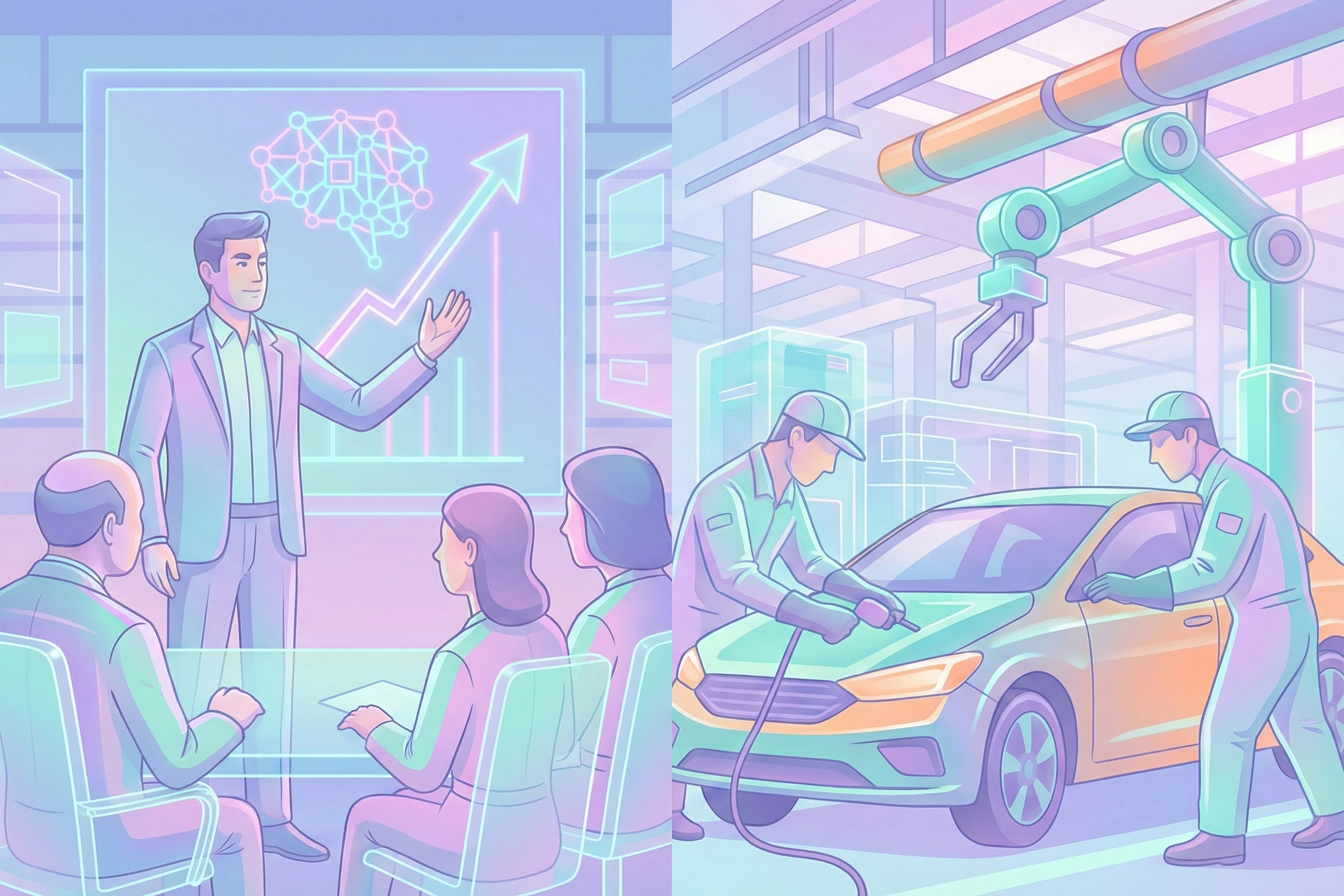
Our built environment not only defines the physical context of our lives, they are also fundamental to our mental, social and cultural wellbeing. The influx of IT, in the form of adaptive architecture, Computer-Assisted Design, 3D construction printing and architecture in virtual worlds means that our relation to our homes, offices and factories are being redefined. Here we will take a closer look at how IT and architecture are blending and how this changes the way they relate to humans.
From the 1960’s onwards, IT has had a growing role in architecture. This started with structural engineering and construction management using digital tools like Computer-Assisted Design (CAD), Building Information Modeling (BIM) and Building Performance Simulation (BPS). Its first noteworthy accomplishment is conducting the structural analysis for the roof of the Sydney Opera House, where its complex arch-like structures could not have been calculated any other way. Today, these tools are increasingly enriched with artificial intelligence (e.g. parametric- and generative design) and robotics (e.g. 3D-printing) allowing architects and engineers to design and build better, faster and cheaper.
At the same time, digitizing societies call for different architecture. E-commerce, for instance, has impacted our inner cities by disrupting their bricks-based equivalents. Instagram drives cities to develop ‘Instagrammable architecture’ and AirBnB has caused a mono-culture in interior design for apartments as a result of trying to appeal to the typical AirBnB renter. Lastly, the field of Human Computer Interaction has introduced concepts like user experience (UX) and usability which have also impacted architecture.
The rise of virtual worlds has also opened the door to virtual architecture. Interestingly, architecture, a discipline that was generally used to follow Vitruvius’ triad of qualities firmitatis, utilitatis, venustatis – that is, stability, utility and beauty, could in this new space pursue the latter two without necessarily having to answer to the first, as these virtual worlds do not have to adhere to the laws of physics. As a result virtual buildings can be almost unrestrictedly imaginative, further challenging the already controversial distinction between architecture and art.
Beyond the general impact of IT on architecture, also witness a more intimate convergence of IT and architecture. While the first general-purpose computer ENIAC in 1945 took up an entire building of 167 square meters, ongoing miniaturization, wireless connectivity and cloud computing imply that computers can be physically embedded in a building or moved out of sight. This, combined with AI, sensor technology and robotics, results in forms of adaptive architecture, kinetic buildings and smart environments. Imagine, for instance, buildings that adapt to your emotional state by changing the colors of the walls to calm you down, automatically change the room setup and furniture based on your social agenda or change position and shape based on the weather. Driven by the field of Human-Computer Interaction, which has moved from button pushing and screen glaring to more natural and spatial forms of interaction, buildings are becoming more context-aware, adaptive and altogether have turned into enormous interfaces. Consequently, architecture, once regarded as firm, stable and unchanging, is becoming increasingly fluid and ‘alive’.
To understand how our relation with architecture and IT is changing due to this convergence, post-phenomenologist Don Ihde’s Mediation Theory provides us with a meaningful typology by describing the different human-technology relationships. With the first type, embodiment relations, the technology forms a unity with a human, and this unity is directed at the world (e.g. reading glasses). The second type is the hermeneutic relation in which technology represents an aspect of the world, (e.g. a thermometer). The third category is the alterity relation, where human beings interact with technologies in a way that is somewhat similar to how we relate to other human beings, (e.g. personal computer). Lastly, the background relation refers to the instances were technology resides to the background when interacting with the world. With some exceptions, architecture can generally be categorized in the latter category as buildings usually form the context for other activities. However, now that computers are merging with computers, we can see how buildings increasingly adopt more of the former relations as they start to become interactive, while computers become more ambient, residing to the background and interact with us without us being fully aware of it. According to Peter-Paul Verbeek these smart environments have resulted in a brand new category in mediation theory, what he likes to call the immersion relation, in which ‘technology is not just the background for our existence, but rather an interactive context’.
Yet, the prospect of our buildings increasingly functioning as an interface, comes with some ethical consequences. Philosophical concepts like Foucault’s panopticon already show that architecture and digital systems bear a responsibility in that they guide our behavior and influence our psychology as they shape the physical and virtual space, respectively. However, where we generally know our way in physical space, we have barely developed best practices when it comes to responsibly guiding inhabitants through our digital spaces (e.g. privacy breaches, user manipulation), let alone these hybrid spaces that are now emerging in the form of context-aware adaptive buildings. Interestingly, the term façade usually refers to the front face of a building, but is also figuratively associated to an deceptive outward appearance, obscuring what is going on behind it. This shows that the outer appearance of a structure creates expectations of what is going on behind it. Similarly, an interface can also communicate or obscure the underlying digital architecture. Even more so, future architecture, within the context of Verbeek’s immersion relation, will interact with us in a more ambient, latent and ambiguous way, thereby challenging our autonomy. Consequently, people will have to renegotiate a common understanding of this newly formed topology and determine what is private and public, knowing where the physical ends and the digital begins and establish a collective design language that clearly communicates these conventions to its inhabitants. Hence, future designers and engineers carry great responsibility as they are involved in making these decisions while carving out and restricting our digital and physical spaces.

